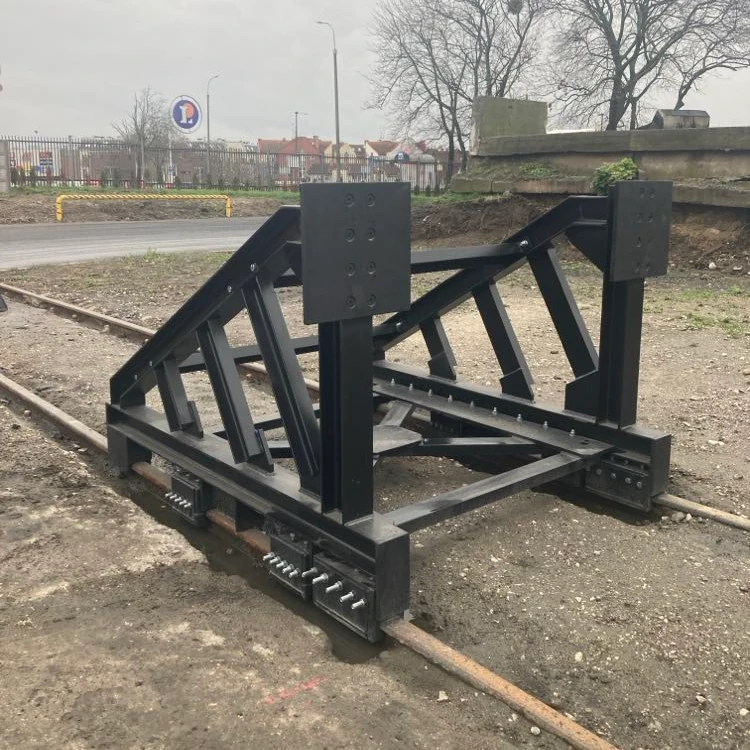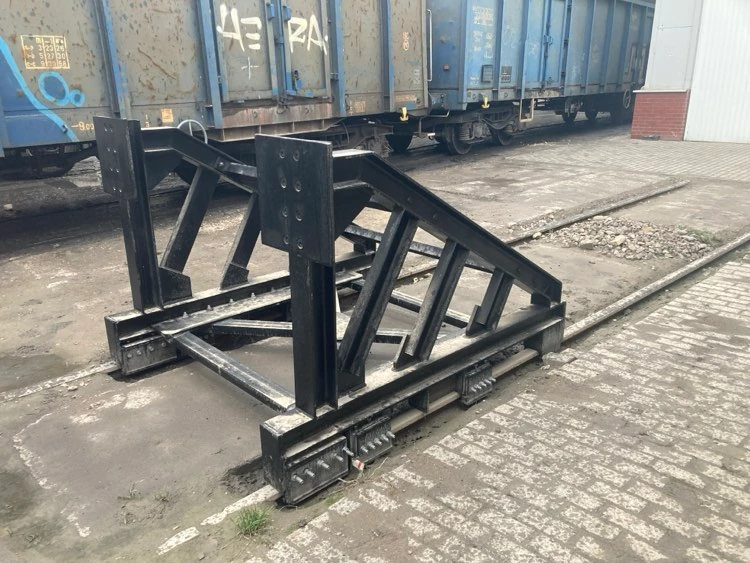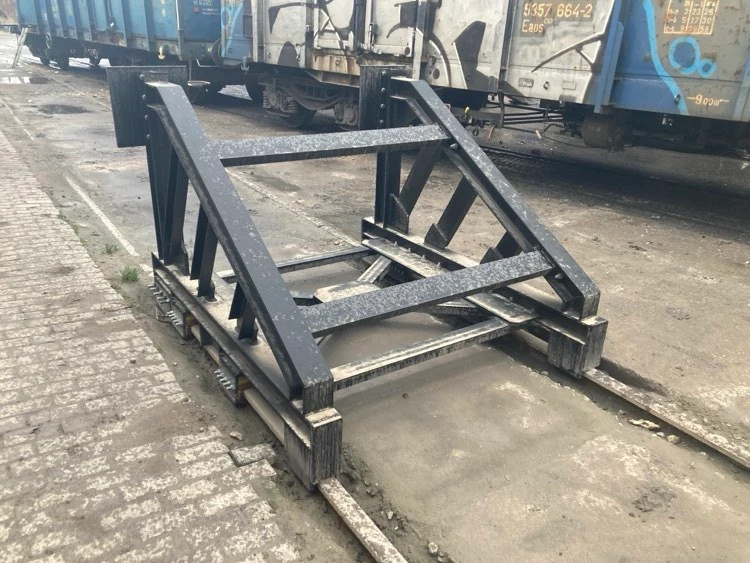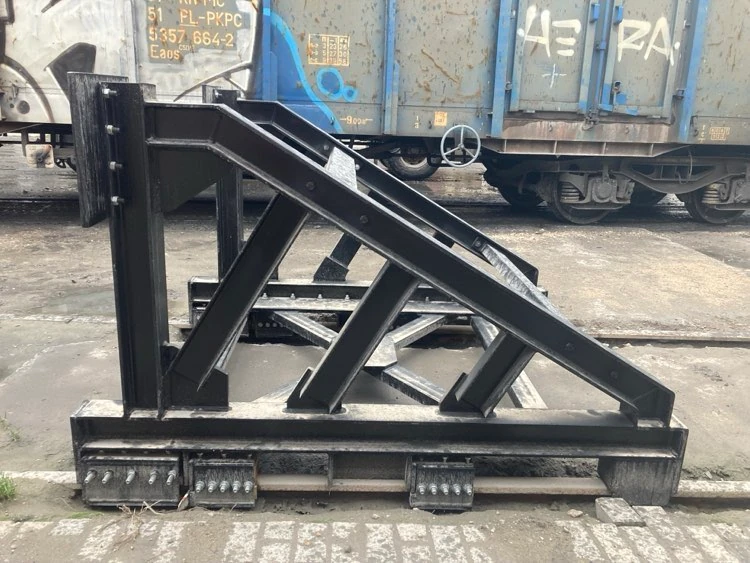
Construction of the buffer stop
A railway sliding trestle with impulsive action is made of a truss structure with buffers and rail resistances - brakes (the main elements responsible for the impulsive work of the railway retaining trestle). All components can be conveniently screwed together at the final installation location of the railway retaining trestle with the calculated appropriate number of rail supports placed in the sockets intended for this purpose. If required, the resistors can be placed behind the railway trestle. Depending on the weight of the trainsets, their speed and the expected braking distance, the appropriate number of rail resistances (brakes) is selected.

Installation of the sliding buffer stop
The use of a sand cushion is not required for the installation of the buffer stop. The useful length of the track occupied by the trestle is equal to the sum of the length of its structure (2 m) and the braking distance, which allows for optimal use of the available tracks. The buffer can be used as a permanent or temporary object. The assembly or disassembly process does not exceed a few hours and can be carried out without taking the tracks out of service.

Positive opinion of the Railway Institute
The offered self-braking buffer stop has received a positive opinion from the Railway Research Institute as part of the National Technical Assessment IK-KOT-2022/0155 issue 1.

Technical parameters
Weight of braked depot: up to 4000 tons Speed: up to 20 km/h Braking distance: to be calibrated by selecting the number of brakes
Legal basis
Admission to the market and operation of the retaining trestle as well as other structures, equipment or vehicles is regulated by: "Regulation of the Minister of Infrastructure and Development of 13 May 2014 on the approval for operation of certain types of structures, equipment and railway vehicles. (Journal of Laws of 30 May 2014, item 720) Pursuant to Article 22f(14) of the Act of 28 March 2003 on Rail Transport. (Journal of Laws of 2013, item 1594 and 2014, item 644). According to the above-mentioned legal act, the obligation to obtain a type approval certificate results from the inclusion or not of a given object in: "List of types of structures, equipment and railway vehicles for which it is required to obtain a type approval certificate." The said list can be found in Chapter 3 of the above-mentioned regulation. As a consequence of the fact that retaining trestles are not included in that list, there is no obligation and no possibility of holding a type-approval certificate for them. Despite this, guided by safety considerations and the need to confirm the technical correctness of the solutions used, we have carried out a number of tests and tests of our goat. The culmination of the whole process was the performance of final functional and strength tests at the Railway Research Institute in Warsaw, as a result of which we obtained the National Technical Assessment of our product, which in turn allowed us to obtain the possibility of assigning the B mark for retaining trestles.
